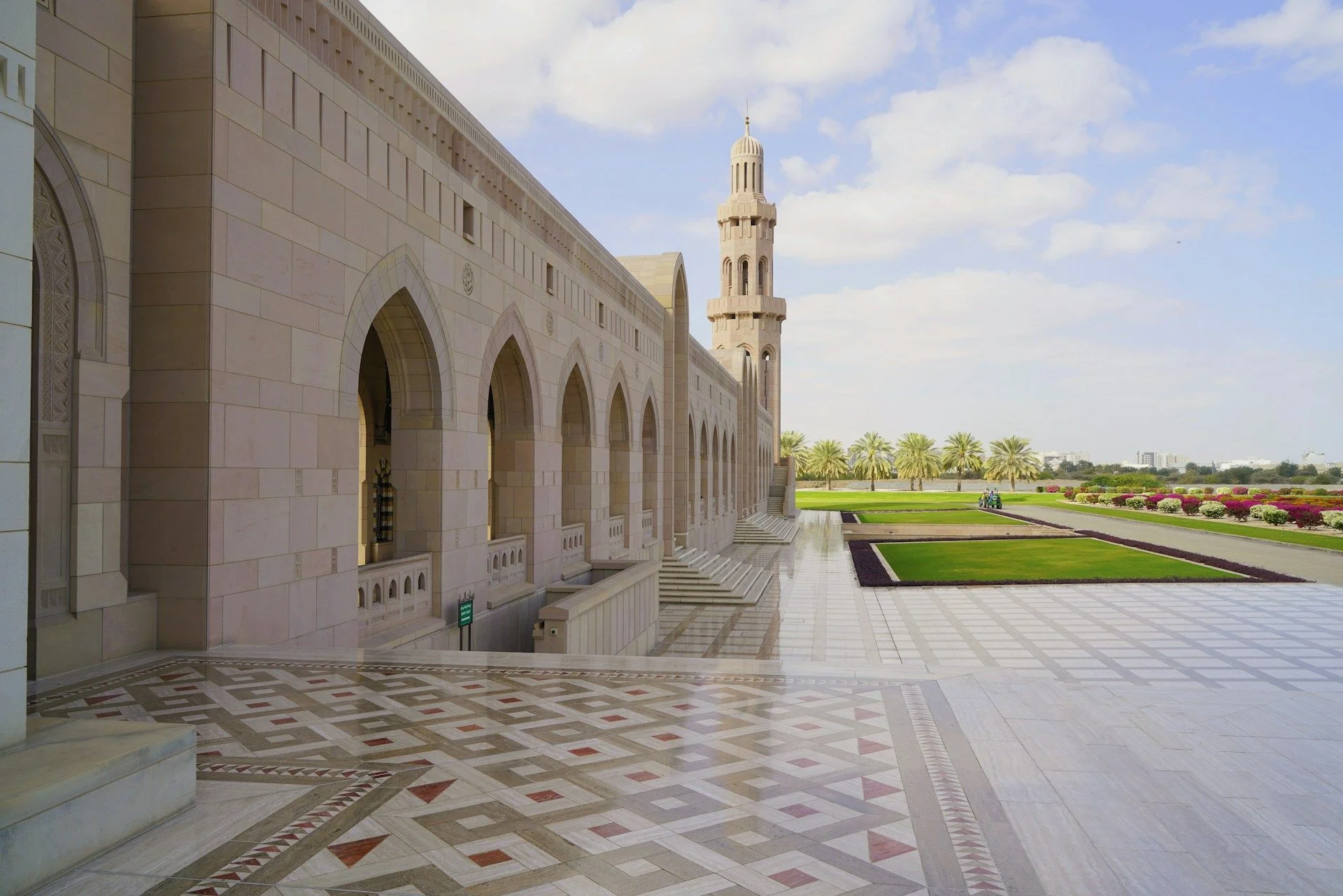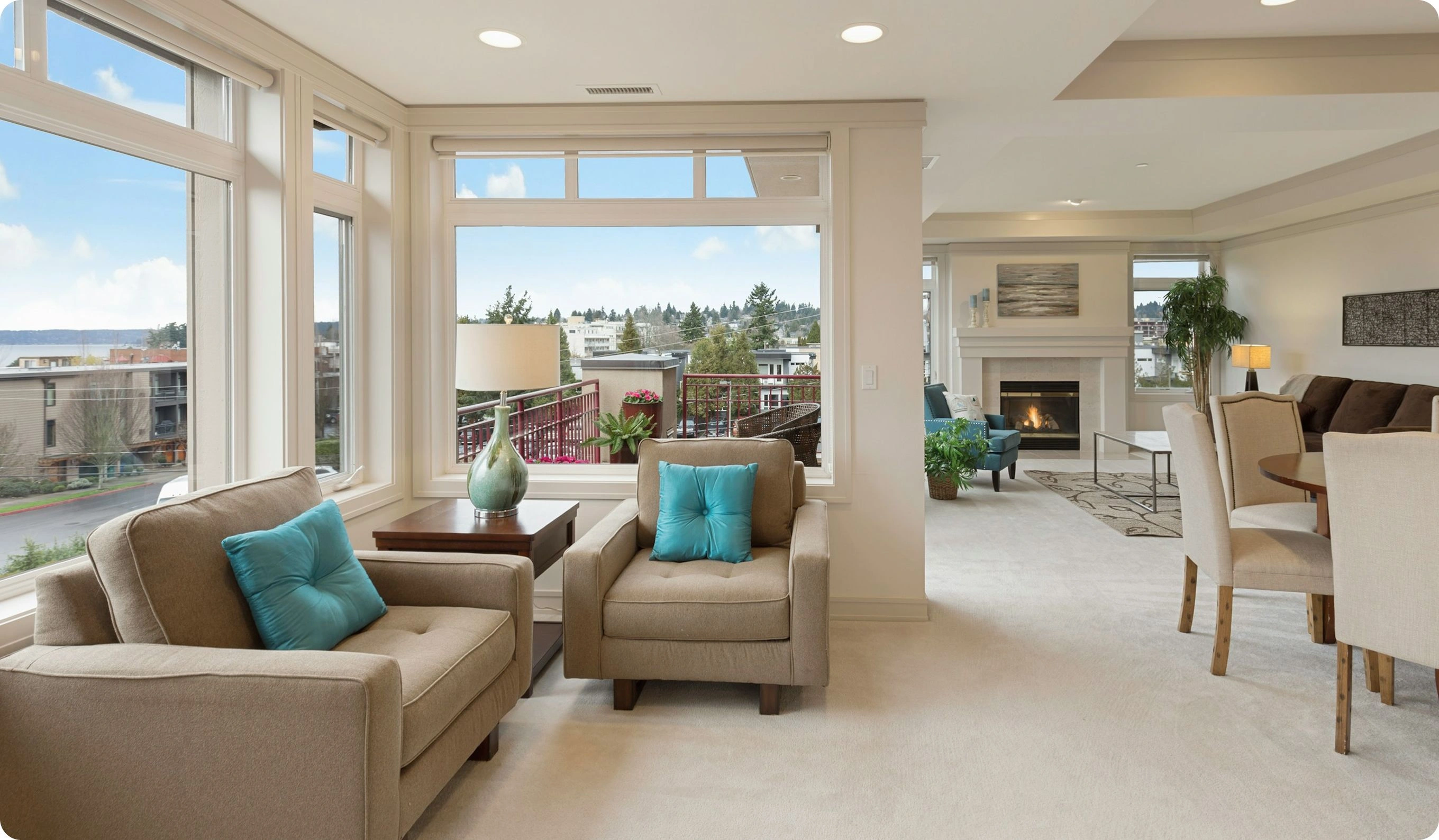Commercial Property Listings in Oman – Investment OpportunitiesCountry of sea breeze, canyonsand calm investment pace

Best offers
in Oman
Benefits of investment in
Oman real estate
Residency through real estate
Foreign investors can obtain long-term residency by purchasing property, opening the door to stable living and regional business access.
Quiet, secure investment climate
Oman is politically and economically stable, making it ideal for conservative investors looking for asset protection in the Gulf.
Growing tourism and expat interest
Muscat and coastal zones are increasingly popular among expats and tourists, driving future rental demand.
Residency through real estate
Foreign investors can obtain long-term residency by purchasing property, opening the door to stable living and regional business access.
Quiet, secure investment climate
Oman is politically and economically stable, making it ideal for conservative investors looking for asset protection in the Gulf.
Growing tourism and expat interest
Muscat and coastal zones are increasingly popular among expats and tourists, driving future rental demand.

Useful articles
and recommendations from experts
Buy Commercial Property in Oman: Unlocking GCC Economic Potential
Straddling the crossroads of Asia and Africa, the Sultanate of Oman merges centuries of maritime heritage with a modern, forward-looking economy. Often overshadowed by its more high-profile neighbors in the Gulf Cooperation Council (GCC), Oman quietly offers a stable and welcoming environment for international investors looking to buy commercial property in Oman. Whether you’re drawn by the country’s strategic location near key maritime routes or intrigued by its policies encouraging business growth, Oman stands out as a promising choice for those targeting Oman real estate investment opportunities.
Crucially, Oman’s government has embarked on initiatives aimed at diversifying the economy away from oil dependency. Sectors such as logistics, tourism, and manufacturing are being prioritized, supported by improved infrastructure and incentives for foreign businesses. This modernization drive dovetails with a broader GCC vision for economic integration, enabling Oman to leverage its geographic advantage near the Indian Ocean and Red Sea shipping lanes. For commercial real estate investors, the result is a market marked by growing tourism and infrastructure, a flourishing industrial sector, and rising urban centers that require new offices, retail outlets, and hospitality complexes.
Commercial Real Estate in Muscat: The Capital’s Contemporary Growth
For many buyers, the first step into Oman is through commercial real estate in Muscat, the nation’s capital and administrative hub. Well-known for its blend of modern architecture and traditional Arabian culture, Muscat hosts government institutions, international embassies, and corporate headquarters.
1. Business-Friendly Regulations
Over the years, Oman has relaxed rules on foreign ownership within designated areas, offering a clearer path to office space for sale in Seeb or other commercial districts around Muscat. These regulations, often part of specialized business zones, encourage multinational corporations and SMEs to establish local operations, driving consistent tenant demand for offices, co-working spaces, and retail units.
2. Tourism and Hospitality
Muscat’s scenic waterfront, upscale hotels, and iconic landmarks (like the Sultan Qaboos Grand Mosque) help sustain a steady stream of global visitors. Commercial properties—especially those near popular tourist routes—can benefit from year-round foot traffic, supporting restaurants, leisure activities, and luxury retail.
3. Infrastructure and Connectivity
From a modern international airport to expanding road networks, Oman’s capital undergoes continuous infrastructural enhancements. Easy access to highways and transport hubs boosts the allure of commercial plots, making them ideal for warehouses, showrooms, or logistics operations that service both Muscat and other regions.
4. Upscale Residential and Mixed-Use Projects
Alongside commercial demand, mixed-use developments in affluent Muscat neighborhoods blur the line between living, working, and leisure. Investors who integrate office floors, retail outlets, and apartments within a single complex can attract diverse tenant profiles, mitigating vacancies during market fluctuations.
Invest in Omani Commercial Properties: Advantages and Growth Drivers
Deciding to invest in Omani commercial properties hinges on understanding the core factors that power Oman’s real estate market. Beyond Muscat, coastal and interior regions are ripe for development, each shaped by the government’s broader economic goals and government incentives for foreign investors.
1. GCC (Gulf Cooperation Council) Economic Region
As part of the GCC, Oman benefits from interlinked markets in Saudi Arabia, the UAE, Bahrain, Qatar, and Kuwait. This regional cooperation yields easier cross-border trade, shared infrastructure ventures, and a larger potential customer base. Investors in commercial real estate can benefit from a region-wide flow of travelers, professionals, and business partners.
2. Growth in Tourism and Infrastructure
Initiatives like Oman Vision 2040 underscore the country’s commitment to tourism and infrastructure. Projects such as waterfront promenades, luxury resorts, and airport expansions pave the way for hotel chains, retail plazas, and entertainment complexes—providing steady demand for commercial rentals.
3. Emerging Hospitality Sector
Traditionally overshadowed by neighbors like Dubai, Oman’s hospitality industry is climbing quickly, focusing on eco-tourism, cultural events, and pristine coastlines. Destinations like Salalah, Nizwa, and Khasab are seeing more visitors, creating untapped opportunities for small-scale resorts or serviced apartments that cater to adventurous tourists seeking authenticity.
4. Strategic Location near Major Trade Routes
Oman’s port cities—like Duqm and Sohar—are positioned near the Strait of Hormuz and Indian Ocean shipping lanes. As shipping traffic grows, so do prospects for logistics parks, ship maintenance yards, and ancillary services. Commercial owners catering to this maritime trade may secure long-term leases with importers, exporters, and distribution companies.
Office Space for Sale in Seeb: Modern Business District on the Rise
Situated west of central Muscat, Seeb is increasingly recognized as a burgeoning commercial corridor. For those scoping office space for sale in Seeb, the area’s strategic proximity to Muscat International Airport, plus recent urban development, offers a compelling blend of convenience and growth potential:
1. Proximity to the Airport
Offices near the airport suit businesses needing to import or export goods, shuttle employees and clients, or host frequent international visitors. Locating in Seeb reduces transit times and ensures smoother logistics for overseas partners—a significant plus in today’s fast-paced commerce.
2. Business-Friendly Infrastructure
Road networks in Seeb are continually upgraded, and the area experiences a surge in mixed-use developments—residential towers, retail outlets, and entertainment venues. This growing infrastructure means workers and clients have easy access to dining, banking, and leisure options right next to office premises.
3. Rental Income Stability
While Oman’s property market isn’t immune to global economic shifts, Seeb’s long-term trajectory appears encouraging. Corporate tenants that value Seeb’s connectivity and new-build office designs often sign multi-year leases, providing stable rental revenues for landlords.
4. Diverse Tenant Base
Because Seeb caters to many industries—logistics, aviation services, tech startups, and professional consultancies—investors can mitigate vacancy risks by accommodating a variety of tenant needs. Buildings with flexible floor plans or built-in IT infrastructure can capture higher rents from businesses wanting to scale up or pivot quickly.
Oman Property Market Outlook: Balancing Tradition and Future Growth
Evaluating the Oman property market outlook reveals a country striving to balance its rich cultural identity with robust economic reforms. While energy exports have historically funded much of Oman’s growth, recent diversification efforts and investor-friendly laws point to a more varied commercial ecosystem. Here’s what prospective buyers should note:
• Strategic Location Near Major Trade Routes
Oman’s coastline offers direct access to global shipping lanes, anchoring the country as a critical node for Middle Eastern and African commerce. By capturing a portion of this transit business, Oman nurtures steady demand for warehouses, logistics centers, and office buildings that cater to trade operations.
• Government Incentives for Foreign Investors
Low tax rates, potential freehold zones, and streamlined licensing are cornerstones of Oman’s welcoming stance toward international capital. Nonetheless, regulations can vary between regions. Consulting local experts is key to identifying free zones or dedicated business parks that grant full foreign ownership or simplified visa processes.
• Emerging Hospitality Sector
As Oman further highlights its heritage—from desert safaris to historical fortresses—smaller cities and coastal towns are ripe for boutique hotels, eco-lodges, and resort developments. Investors open to less-central geographies can unearth hidden gems with lower entry costs and strong upside potential.
• Business-Friendly Regulations
While not as extensive as in some neighboring Gulf states, Oman’s pivot toward liberalized property laws includes mixed-use zoning, build-to-suit opportunities, and official guidelines promoting joint ventures. Prospective buyers should keep an eye on ongoing reforms, which might further ease foreign ownership caps or expand freehold areas.
Investing in a Transforming Arabian Peninsula
From commercial real estate in Muscat to office space for sale in Seeb, Oman represents a GCC state forging its own path—embracing modern commerce, tourism, and infrastructure development while retaining its unique cultural values. By choosing to buy commercial property in Oman, international investors can anchor themselves in a stable, strategically located market that balances tradition with openness to global business practices.
Notably, the government’s emphasis on economic diversification, augmented by a strategic location near major trade routes and thoughtful government incentives for foreign investors, means commercial ventures in logistics, retail, and hospitality can thrive. Although market cycles fluctuate, Oman’s measured growth and commitment to modernization suggest room for steady returns, especially for well-researched acquisitions in up-and-coming zones like Seeb or established districts in central Muscat.
For those willing to conduct comprehensive due diligence—spanning local property laws, freehold regulations, and potential tax incentives—Oman can deliver a worthwhile entry into the GCC (Gulf Cooperation Council) economic region. By aligning investment strategies with Oman’s evolving development blueprint, commercial real estate owners stand to benefit from the Sultanate’s growing influence, tapping into the region’s broader economic momentum and forging a resilient, future-focused portfolio in the heart of the Arabian Peninsula.
